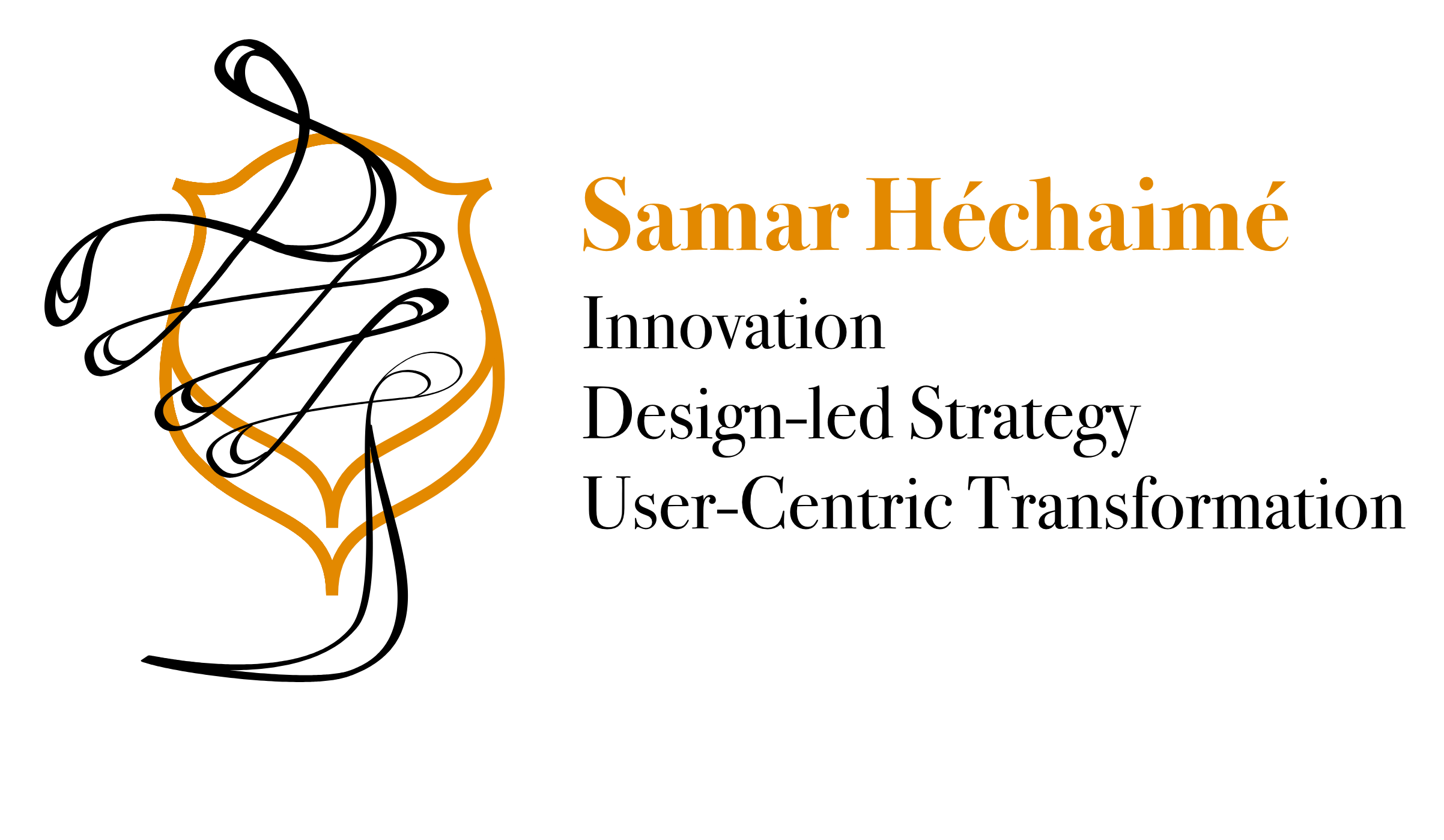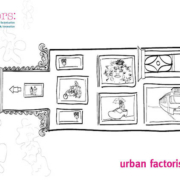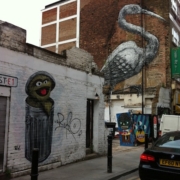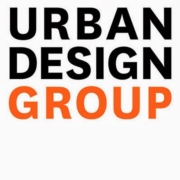Capturing our irrational beings
Rationality, the refuge of the intellectual mind, has been a driver to many endeavours from economics to creativity. Rationality has driven the international style and modernism in early century architecture and still drives the field today. It is the centre of the neoclassical economics. It governs the fields of branding and advertising. Not to mention medicine, politics, law, engineering…
The centre of all these endeavours should be people. People are local beings, cultural beings living within communities, falling to the herd mentality, governed by habit, emotion, shifting states of mind, therefore intrinsically irrationality.
In order for our creative endeavours to be more inherently adoptable they should, think locally, culturally, humanely, in essence capture our irrational beings.
Behavioural Economics
Behavioural economics has emerged as a blend between the world of economics and psychology. It has found its way into the world of advertising through the application of the same methodology in the development and creation of systems aimed at consumer behavioural change. Manifestations of this emergence are seen through a number of TED talks (the global conferences for innovation and excellence), industry lectures, treaties, as well as the establishing of a behavioural economics unit at the IPA (Institute of Practitioners in Advertising) and publishing of papers on the subject. One of the most vocal advocates of Behavioural Economics is Rory Sutherland, the Vice Chairman of Ogilvy UK, whose TED Talks I have recently come across (http://www.ted.com/talks/rory_sutherland_perspective_is_everything.html) . Rory is not a behavioural economist but he wants to popularise it and get it into the mainstream. Even though Behavioural Economics is more prevalent now, he says his goal for true mass popularisation would have been reached when Daniel Kahneman (winner of Nobel Memorial Prize in Economic in 2002 for his work in developing the Prospect Theory in Behavioural Economics) is be mobbed by a tour bus filled with enthusiastic star struck Japanese tourists. Maybe having it in songs sung by Justin Bieber pop star types to overenthusiastic teenagers is the answer. What excites me about such lectures is that it backs what I have been advocating, working on and developing with regards to user experience design and how it can affect behavioural change. I have been arguing for holistic & multidisciplinary strategies as the way to approach our designs and creative endeavours in all their forms. Those strategies then manifests themselves through all the various applications and user touchpoints that we can develop. These touchpoints could be either tangible or intangible or both. Our holistic strategies should be human centred in order for them to render the necessary changes in behaviours and attitudes.
As it stands, when we design we seem assume working in a rational world, guided by pure Euclidean principles and inhabited by perfectly rational human beings. We count upon the notion that the conditions are going to always be optimal to experience our designs whether tangible or intangible. We think that we can choreograph these experiences to fit our ideal predefined pathways.
This is certainly untrue. The reason is that we suppose that rationality and instinctive ‘logic’ are congruent and that everyone will be able to reach the same rational conclusions we did. Nevertheless instinctive ‘logic’ is actually the driver of quite a number of decisions, not rationality. Instinctive ‘logic’ is idiosyncratic.
As an example it is irrational to think that Star Wars is anything beyond a fantasy world created by the fertile imagination of George Lucas and his team. Yet for the fans it is completely logical to unite under the banner of Star Wars, identify with characters, join conventions and even spend huge amounts of money buying paraphernalia that reference or are part of the Star Wars franchise. Therefore in order to influence any behaviour within this group it is important to appeal to the instinctive self rather than the rational self and weave the intended change within the story and timeline of Star Wars so that this behaviour change can become more intuitive and be adopted effortlessly.
Building frameworks
Seeing the importance of our instinctive ‘logic’ in our daily decision making, we should not focus so much on the rationality of our end users. We should help our clients build strategic and experience frameworks that account for the local taste, the element of choice and the shifting nature of our the user’s sense of belonging and decision making state of mind.
Whenever we cater to our global network of clients, whether they are large multinationals or local businesses, we need to think about the frameworks we develop and how these frameworks interact with the end user. The end user is inherently a local with local tastes and local frames of references. Nevertheless the design industry, seems to focus on the ‘human universal’ (the hypothetical person with behavioural traits that are only universal) rather than the human local (the more realistic person whose behaviour is coloured by local cultures, traditions and mindset). The shift in that design framework towards the human local might mean the difference in the adoption and the emotional attachment towards a brand, a corporation, a system, a product or an entity.
McDonald’s has successfully done that by first focusing on developing habit. Its burgers are certainly consistent in their quality and taste around the world. Second it focuses on local taste by adapting its menus slightly differently in different locations, again focusing on habit, whether it is a McKrokette inspired by the kroketten in the Netherlands or McFalafel based on the pervasive deep fried grain balls in the Egypt or the Nürnberger hamburger based on the local speciality in Nuremberg.
The service is also consistent, while catering to local preferences. For example McDonald’s offers valet parking in Beirut, the McExpress walkup window in China serving drinks in malls or 24hr delivery service in Singapore. Therefore McDonald’s focuses on creating a framework within which its end users are comfortable. The framework encompasses the global availability and readiness that McDonald’s is known for, with a local twist to the customer interaction, as well as the famous product accompanied by some local popular street food specialities.
McDonald’s has also been the master of nudging (term used from the book ‘Nudge: Improving Decisions about Health, Wealth, and Happiness’ written by Richard H. Thaler and Cass R. Sunstein) by combo packaging its products, to super-sizing, to cues and to visual stimuli within the store and beyond. This nudging has become so powerful that now the moment its customers see the golden arches they immediately start feeling hungry.
McDonald’s has been able to bridge the borders between the instinctive ‘logical’ and the rational, the system 1 versus system 2 of its consumers (terms defined Daniel Kahneman in the Dual Process Theory). McDonald’s might not be healthy, but our intuitive ‘logic’ justifies our choice by focusing on the salad we purchased and forgetting the rest of our order: the coke, the burger, and the fries.
Therefore the concept, as demonstrated by McDonald’s, and other such successful brands, is to create frameworks that are flexible enough to allow each user to write their own story within the brand framework. The brand story becomes the culmination of the multitude of their users’ stories constantly changing, growing and overlaying each other to come and represent the brand story as a whole.
The strengths of the user interaction frameworks we develop (whether it is a brand, a communication campaign, a business framework, a digital environment or a physical environment) are thus with the element of choice we offer the end user, whether it is a true choice or the illusion of choice. We all believe we are individuals with complete control over our choices and decisions. Yet our choices and decisions are culturally conditioned by the societies and the groups we belong to or identify with and our inherent ideologies. Some of these belongings are more encompassing and large scaled like national belongings. Others are more shifting whether it is throughout the day or throughout or lifetimes.
For example throughout her day, a woman can be a mother, a business executive, a health-conscious shopper, a community activist, and then again a mother and a wife. Her mindset, the group of people she is surrounded by, and her objectives change throughout the day depending on the role she is playing at any one point in time. This shape shifting, and focus and refocus from micro to macro and back, determines her behaviour throughout the day. .
The designers in all disciplines, creatives and advertising account executives should concentrate on understanding the context of our multiple beings which is what will allow them to create effective experience design on the strategic level and convincing nudging on the tactical level.
User centred strategies
It is imperative not only to keep in mind the dynamic nature of our end users and target them in frameworks that encompass advertising campaigns and branding strategies for consumer goods and institutions, but also to think within that mindset across all disciplines and market sectors, whether it is a service design, a spatial design, a package, a digital realm and others.
My experience has included designing complex experiences and brand strategies and systems, for entities such as universities, healthcare systems, airports and transportation systems as well as the smallest product applications and touchpoints. It has always been primordial to understand who I was communicating with and who is going to experience the brand or system. From that user perspective I am able to create frameworks of multileveled touchpoints that allow each user to engage and interact with the system according to their own pathway of choice which is flexible and ever-changing. This goes against the idea of choreographing experiences since that type of design forces the user into predesigned pathways which are not flexible and biomorphic. The pathway of choreographed experience forces us into certain behaviours in a more overt manner which users tend to resist. In order to have the users change their behaviours and adopt new ones it has to be more subconscious and operate along gentle and persistent nudging which plays upon the preexisting mental frames of reference of the user as well as their memories allowing them to build new cognitive experiences.
User experience design, is a combination of design creativity, problem solving, anthropology, sociology, psychology, behavioural finance or economics as well as business understanding. The strength of good and successful user experience design is its multilevelled experiencing. It is not only about the communication strategy and advertising, it is definitely not restricted to the digital realm, it surely encompassed the brand, its architecture and its messaging, it absolutely manifests itself in the service design and business model of the client, and naturally expands into the built environment and architecture whether it is as small as a package or a sales touchpoint, or as big as a city.
Therefore we should not only focus on nudging and its effects on a momentary basis, at the point of purchase and from a consumption perspective. Nudging can also be effective on a long term basis to change societal and cultural behaviours, like a small stream of water painstakingly shaping the shape of a rock. The focus here is the ‘system 2’ and the deliberate learning of a behaviour to turn it into a ‘system 1’ which is intuitive action.
Take for example the massive transformation in the Brazilian city of Curitiba lead by the mayor at the time Jaime Lerner, who was an architect/ urban planner by trade. The changes that he has implemented, through his three tenures as a mayor starting in 1972, with very small budgets, has created a framework which turned Curitiba into the most liveable city in Brazil. 90% of its inhabitants would not trade living there, whereby 70% of the inhabitants of Sao Paolo want to live in Curitiba. The changes in behaviour that have been instigated by that framework raised the GDP, the quality of life and the population’s attachment to their city leading to intuitive continuous enhancement emerging directly from the population.
Jaime Lerner focused on developing the city development framework around three issues: Mobility, Sustainability and Tolerance and Social Diversity.
The first issue was tackled through the invention of the Bus Rapid Transit (BRT) a bus system that operates like an underground, with its dedicated stations (not shelters), lanes, and triple bendy buses. The way it was achievable was through co-responsibility. He approached the private sector asking them to fund the fleets while the city funded the routes and planned the itineraries. Residential development and businesses started developing around the system building a more dynamic and engaged city. The co-responsibility meant that the population, the private sector and the city all had a shared sense of partnership, pride and responsibility in the growth and upkeep of the system. Lerner understood that everything has to work together and that it is about successfully combining living, working and leisure. The transportation system should not act only as the link between those different facets otherwise the public transport will end up being used mainly twice a day at peak hours. ‘If you have a system that works always and connects living and working activities as well as leisure it is more of a city than a corridor of public transport.’ In Curitiba the BRT is the vein system that pumps vitality into the city. It has even lessened car ridership and usage since the cars get stuck in traffic but the buses never do.
In terms of sustainability he made sure to balance ‘the equation between what we save and what we use’. Focusing again on co-responsibility and shared partnership he did multiple interventions that have transformed Curitiba into one of the most sustainable cities. Teaching children how to separate garbage in school has transferred this behavioural shift to their parents who separate household rubbish, bringing down to a minimum the amount of separation needed to be done at the refineries. He engaged with the inhabitants of the slums and again made them partners in the system. The slums were too narrow for the garbage trucks to be able to efficiently collect trash. The inhabitants were throwing their garbage in the streams and on the small roads, the same streams and roads where their children would play. In order to stop that from happening Lerner started an exchange program. For every bag of garbage the inhabitants would take to a specified collection point where the trucks could go, they would receive either bus tokens or grocery bags. Not only has it stopped garbage from being thrown, but it was an incentive for the inhabitants to pick old rubbish and exchange it, creating a second stream of income for the families and getting the streets and streams clean in the process.
Another project was to engage with the fishermen. The deal was any fish the fishermen caught it were theirs to sell, but any garbage they fished from the water was bought by the city. On days where there was no fishing, the fishermen would fish garbage. The more they fished garbage, the cleaner the bay became. The cleaner the bay, the more fish there were. It was a win win situation.
The tolerance and social inclusion was manifested through all of these projects as he did not focus on gentrification and areas of specific income levels. The city was for all Curitibans. One of the projects that demonstrated this point the best, was the creation of new parks. Instead of building concrete walls to try to manage the floods, a method that has demonstrated its inefficiency namely in places like New Orleans, he built parks. These parks have made Curitiba more liveable and green, with nature accessible to all its inhabitants. To reduce the cost of the park upkeep the mowing of the lawns is kept to herds of sheep. Not only is it cheaper but it engages people with more nature in the city and it provides the city with another source of income.
These and many other interventions, whether long term plans or short term ‘urban acupuncture’ interventions engaged the population of Curitiba and changed their behaviour into one of co-partnership with the city, a shared responsibility and a sense of interconnectivity which allowed more grassroots interventions to emerge from within the population operating with the framework (physical and mental) that has been set.
The example of Curitiba demonstrates how a holistic strategy creates a framework which encompassed the different interventions and application, interconnecting them, thus bringing into existence multileveled experiences which constantly engage the users and grows with them.
Experience and its memory
There is value in helping our economic system to become more sensitive to human behaviour, and thus increasing its overall efficiency. We cannot ignore individual choice, its dynamics and cultural references when analysing decision-making, whether in the simple context of shopping for consumer products, or in the larger context of developing societal systems.
Therefore we should focus on the development of holistic frameworks for our clients through which the end user can interact with their brands, consumer products, systems, policies or environments. These frameworks help change behaviours through a multifaceted experience and gentle nudging which will operate on creating memories that will help shift the user’s mindset. Building memorable user experiences is achievable though a holistic approach, with a cross-pollination of disciplines, under a centralised unifying umbrella, which acts as the facilitation in this multidisciplinary approach.
I believe that our experiences are made up of a continuous string of moments. Each one of these moments is an intersection of what I call the four cardinal points of experience. These four cardinal points are the individual, the community, the physical and the virtual. In order for these moments and intersections to leave a memorable impression and be effective in instigating behavioural change, the user experience should be the junction between human intuitive behaviour and rationality. Most importantly each interaction with the user and each experience they have has to end on a memorable positive note. As Daniel Kahneman reminds us, our experiences are as memorable as the way they end and that their time sequence is not linear but determined by the end of the experience which is what will or will not affect any change in our behaviours.











Interesting…and true 🙂
Thank you Waleed
Samar, a very interesting article and very relevant for all urbanises! I started feeling hungry reading about McDonalds, even though I never go near the place. Enjoyed reading about the Curitiba approach. Well done and I’ll look out for more from you.
Philip, I hope you did not make your way to the closest cathedral of the golden arches.
I do hope we get more cross pollinated and multidisciplinary, and of course human centred, in our approach to problem solving. This alone will allow us to come up with the truly innovative solution that we all speak incessantly about.
Samar, congratulations for this article. That was really inspiring!
You’ve made me think about Mc Donald’s in a different perspective with the local/global approach.
I am brazilian and indeed the BRT in Curitiba is a success. They are now constructing BRT lines in the city where I was born (Belo Horizonte).
Finally, I love the subject “experience and its memory”. Once I spent hours talking about it at work 🙂
Priscilla, thank you for your comment.
Hopefully we can learn from the McDonald’s model and start implementing that in many different markets and industries.
It is great to hear that Belo Horizonte is also implementing the BRT. Hopefully they are also implementing an integrated approach (what was the key to Curitiba’s success) in terms of urbanisation, traffic management, pedestrianisation and integration of green spaces.
Mostly what is needed is an integrated approach with the expertise of many disciplines brought in to these kinds of problems inh a human centred approach.
Very interesting.
thank you Jean, I am glad you enjoyed the read